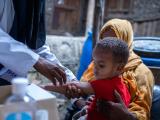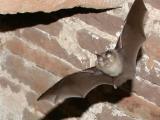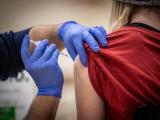Jun 3, 2003 (CIDRAP News) – The United Nations Food and Agriculture Organization (FAO) says the recent detection of bovine spongiform encephalopathy (BSE) in a Canadian cow shows that active surveillance programs for BSE are working.
"The identification of a single case of BSE is not a cause for panic," Andrew Speedy of the FAO's Animal Production and Health Division said in a news release from the agency's Rome headquarters.
"It is good news that odd single cases of BSE are being picked up by inspection," Speedy said. "There has been no sign of an escalation of numbers in any of the countries that have identified isolated cases. Rather, it demonstrates that active surveillance is picking up the one-in-a-million case."
"All countries should continue to check for the disease and apply precautionary measures, even where BSE has never been found," Speedy added. The FAO statement urged countries to take stringent precautions that it and other international organizations recommended in 2001.
Eating meat from BSE-infected cattle is believed to be the cause of variant Creutzfeldt-Jakob (vCJD) disease in humans. About 135 vCJD cases have occurred in the United Kingdom since BSE emerged in British cattle in 1986. Cattle apparently contract BSE by eating feed containing protein from animals infected with BSE or another transmissible spongiform encephalopathy, such as scrapie in sheep.
The FAO statement came as Canadian authorities continued to report negative findings in BSE testing of cattle having possible connections to the BSE-infected cow in northern Alberta. Canadian officials announced May 20 that a cow from a herd at Wanham, Alta., had tested positive for BSE. Because the cow was thought to have pneumonia when it was slaughtered in January, the carcass was sent to a rendering plant and the brain was tested for BSE. The BSE tests were not completed until May.
In an update today, the Canadian Food Inspection Authority (CFIA) said more than 1,160 cattle have been slaughtered and 15 farms are under quarantine in the BSE investigation. The agency reported previously that all cattle from the case farm and several other farms in the investigation had tested negative for BSE. Today the CFIA said a DNA analysis conducted in the search for the cow's herd of origin "has not returned a definitive finding."
The cattle slaughtered so far in the probe include the case herd, three herds that included calves from the case herd ("trace-forward" farms), three herds where feed containing protein from the infected cow may have been used, and several herds being investigated in the hunt for the cow's birth place ("trace-back" farms).
The FAO noted that a few cases of BSE have been discovered since 2001 in several previously unaffected countries, with numbers ranging from one case each in Greece and Israel to 11 in Slovakia. In the United Kingdom, cases have declined from a peak of 37,000 in 1992 to 1,144 in 2002, the agency said. Fewer than 1,000 cases were identified in the rest of Europe last year, officials said.
The FAO said countries should follow the strict BSE prevention recommendations that it issued jointly with the World Health Organization and the Organization Internationale des Epizooties in 2001. These include:
- A national BSE risk assessment
- Removal of "specified risk materials" such as brain, eyes, tonsil, and spinal cord from all beef and sheep carcasses older than 12 and 6 months, respectively
- Eliminating cross-contamination of feed for ruminants with feed for poultry, pigs, and pets (since many countries, including the United States and Canada, allow the use of ruminant-derived protein in feed for nonruminants), or else banning meat and bone meal from animal feeds altogether
- Active surveillance for BSE, including random sampling of all slaughtered cows and testing of cows slaughtered because of disease or accidents
- Identification and recording systems to ensure that any diseased animals can be traced back to their source
The United States follows most of the FAO recommendations, but it does not have an identification system for tracing the origins of particular animals, according to Jeffrey B. Bender, assistant professor of veterinary public health in the University of Minnesota's College of Veterinary Medicine. "That's been an ongoing debate for a number of years," Bender told CIDRAP News. "Canada is ahead of us in that game. They recently approved a national identification system and are implementing it as we speak. I venture to guess that with that current case in Canada, there'll be increased efforts to get a national identification system" in the United States.
Speedy implied that countries with strong surveillance systems should be able to maintain their beef export markets in the long run even if a few isolated BSE cases are found. "It's is not so much whether there have been isolated cases of BSE found by animal testing, but whether the exporting country can provide assurance that the system is in place to keep infective material out of the food chain," he said.
See also:
FAO statement on BSE
http://www.fao.org/english/newsroom/news/2003/18603-en.html
Canadian Food Inspection Agency BSE page
http://www.inspection.gc.ca/english/anima/disemala/bseesb/bseesbe.shtml
US Animal and Plant Health Inspection Service's BSE page
http://www.aphis.usda.gov/newsroom/hot_issues/bse/index.shtml





















